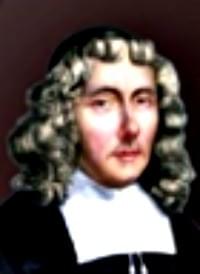
So who exactly was Andrew Murray?

The statue with the broken finger (now fixed)
If you happen to be a South African, you have probably walked past the statue of Andrew Murray in front of the Groote Kerk in Cape Town and wondered who that man was with his now broken forefinger in obvious preaching mode, as if proclaiming the Gospel to every passerby in Adderley Street.
Well, that statue is of Andrew Murray (1828-1917), the great preacher, missionary statesman, promoter of women’s education, and prolific author of over 200 devotional works still avidly read today.
Education
Besides being a church statesman of international renown, he was also a great visionary and man of action. He helped to establish Grey College in Bloemfontein as well as many farm schools in the Orange Free State. While a pastor at the Groote Kerk (1864-1871), he established three schools for the poor at Woodstock, Roggebaai and Hanover Street.
He then turned his attention to women’s education. As it was difficult to find male teachers to fill the empty positions at farm and town schools, he decided to educate females for the job—and this at a time when education was still a male preserve.
So it can rightly be said that he spearheaded women’s education in South Africa. He did this by establishing the Huguenot Teachers’ Seminary in Wellington in 1874. Soon similar institutions based on the Wellington model were established across South Africa.
Missions
Andrew Murray now turned to the task of establishing mission stations and Christian schools to the north of South Africa where, until that time, only explorers, hunters, and less than a handful of missionaries had set foot.
To meet this challenge, he established the Missions Training Institute in Wellington. It proved a great success in attracting young men as missionaries, teachers, and lay workers. As soon as they had graduated, they were sent out to establish mission stations in Bechuanaland (Botswana), Mashonaland (Zimbabwe), Nyasaland (Malawi), Northern Rhodesia (Zambia), and as far north as the Sudan.
According to a census taken in 1927—just ten years after Murray’s death—1447 schools had been established with 96 309 students and 2699 teachers. Furthermore, no less than 72 079 African Christians had been baptized, with a further 15 282 waiting to be confirmed.
Conclusion
Unfortunately, Andrew Murray’s role as a missionary statesman has largely been forgotten today. Nevertheless, many of his devotional works are still available, and have been updated into modern English. They are a must-read for any Christian who wishes to deepen their walk with the Lord.
Andrew Murray’s motto

Andrew Murray adopted the following motto penned by Herman Witsius (1636-1708) who had been a prominent theologian at Utrecht.


© 2017



